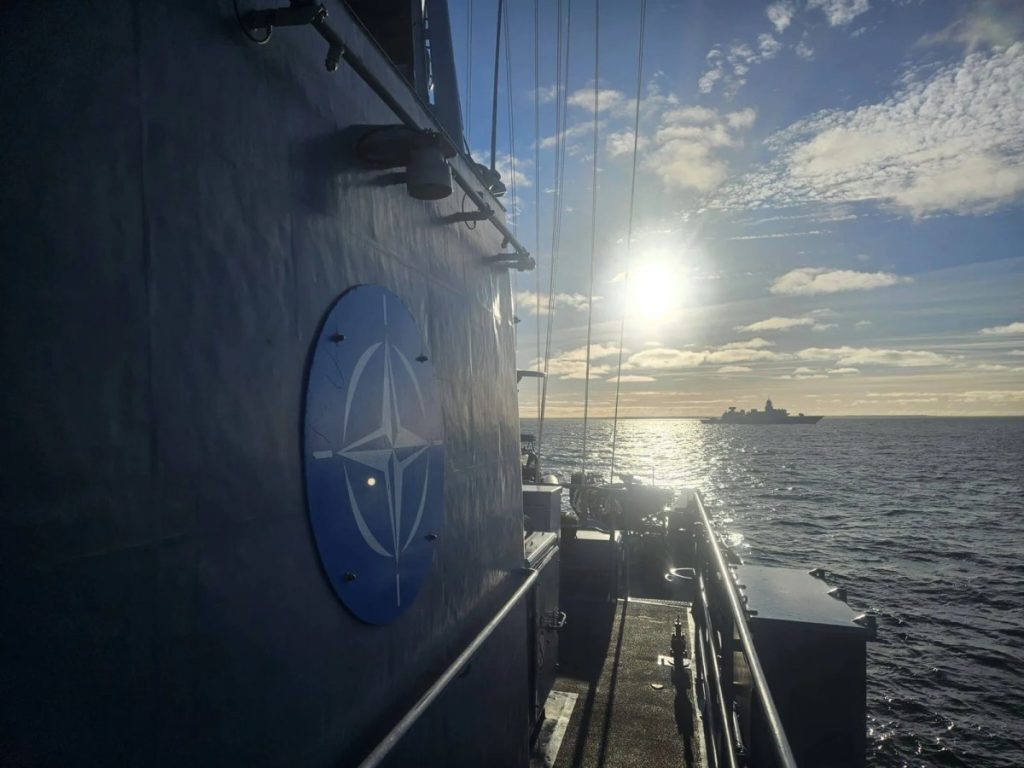
The September incursion of three Russian MiG-31 fighters into Estonian airspace over Vaindloo Island was of short duration, only a dozen minutes, but its strategic reverberations have been much more lasting. Estonian officials called the incursion “unprecedentedly brazen,” and it triggered NATO’s Article 4 consultations as well as highlighted the Gulf of Finland’s geopolitical straits status between Russia’s military and commercial fleets and the outside world.

Vaindloo is only 15 acres of rock, located at the north end of Estonia, only 14 nautical miles from the mainland and 29 miles south of Finland. To the northeast is Russia’s Rodsher Island, and beyond, the ports of Primorsk and Ust-Luga, entrances to the Baltic Fleet’s Kronstadt base. This corridor carries 60% of Russia’s oil and gas exports, much of it via a “shadow fleet” of tankers that skirt sanctions. As Estonian Foreign Minister Margus Tsahkna noted, “It’s very intensive. We’re talking about maybe 400 or more vessels per week.”

As a counter to ongoing airspace intrusions—eight since 2022—NATO has ramped up its Eastern Sentry operation, deploying additional jets and tandem air defense systems. Italy’s extension of its SAMP/T battery in Estonia to spring 2026 provides an important layer: the SAMP/T can shoot out to 120 km, following multiple aircraft or drones at the same time with its Arabel radar. New engagement rules have now been revised to facilitate quicker identification and neutralization of unmanned intrusions, a step prompted by recent surges of Russian drone swarms across Poland, Denmark, and Romania.

Apart from sanctions evasion, the shadow fleet is also suspected to be employed as traveling platforms for spy drones, subsea cable sabotage, and electronic eavesdropping. These vessels normally deactivate AIS transponders, create fake registry documents, and operate without insured documentation, presenting legal and operational hazards. By mid-2025, analysts approximated well over 900 tankers in the shadow fleet with an average age of well above 20 years, heightening collision and anchor-drag threats.

The relatively shallow depth of the Baltic Sea—180 feet average—allows its 35 subsea cables and pipelines to be easily within reach of aggressive forces. Since November 2024, there have been a series of cuts, including Estlink 2, FEC-1, and C-Lion1, and an investigation has implicated Russian and Chinese vessels. The 66-mile anchor drag by the Eagle S tanker caused $70 million damage and required Finland’s historic armed boarding—the first since World War II.

Activated in January 2025, Baltic Sentry utilizes frigates, non-manned marine patrol aircraft, and unmanned surface vehicles (USVs) to monitor seabed installations. USVs provide continuous imagery and electromagnetic spectrum data, enhancing awareness and deterrence. No reported suspicious cable events have been detected, indicating early operational success.

At least a dozen European nations have reported mysterious drone flyovers in recent months. These include kamikaze-type Geran drones over Lithuania to coordinated flights over five Danish airports, necessitating closures. Denmark’s defense ministry called these “systematic flights” by a “professional actor,” as NATO considers a “drone wall” along its eastern flank. Anti-drone equipment such as C-sUAS now integrates radar, optical, and acoustic sensors to neutralize small unmanned air vehicles close to critical sites.

Russia’s June 2025 Decree 914 established new straight baselines in the eastern Gulf of Finland, legalizing internal waters covering nearly 150 km. While consistent with earlier assumptions, the move makes explicit interception rights under UNCLOS, reducing accidental incursions but further entrenching Moscow’s mastery over approaches to St. Petersburg.

European port authorities now ask for insurance and registry evidence from Russian port-bound incoming tankers. Germany’s Fehmarn Belt inspections and Finland’s economic zone inspections are meant to create a legal basis for detaining the non-compliant vessels. The EU’s 19th sanctions package proposes the blacklisting of 118 ships in the shadow fleet and Russian LNG imports by 2027.

There is controversy over shooting down manned Russian aircraft entering NATO airspace. U.S. President Donald Trump’s “Yes, I do” affirmative answer to shooting down intruders was described by Tsahkna as “speaking the language that Putin hears.” But as Russia’s Foreign Minister Sergei Lavrov warned, such an action could be seen as a war deed, emphasized by the fine line between deterrence and aggression.

The convergence of air intrusions, naval shadow war, and submarine sabotage operations in the Baltic Sea has forced NATO to fuse air, sea, and cyber-defense operations into a single operating environment. From the skies above Vaindloo to the seabed cables linking the area, the alliance’s eastern flank is now an experimentation ground for hybrid warfare resistance.


